A story told in five acts: The making of Kentucky Route Zero
Mapping The Zero: Cardboard Computer talks about bringing surreal point and click journey Kentucky Route Zero to an end
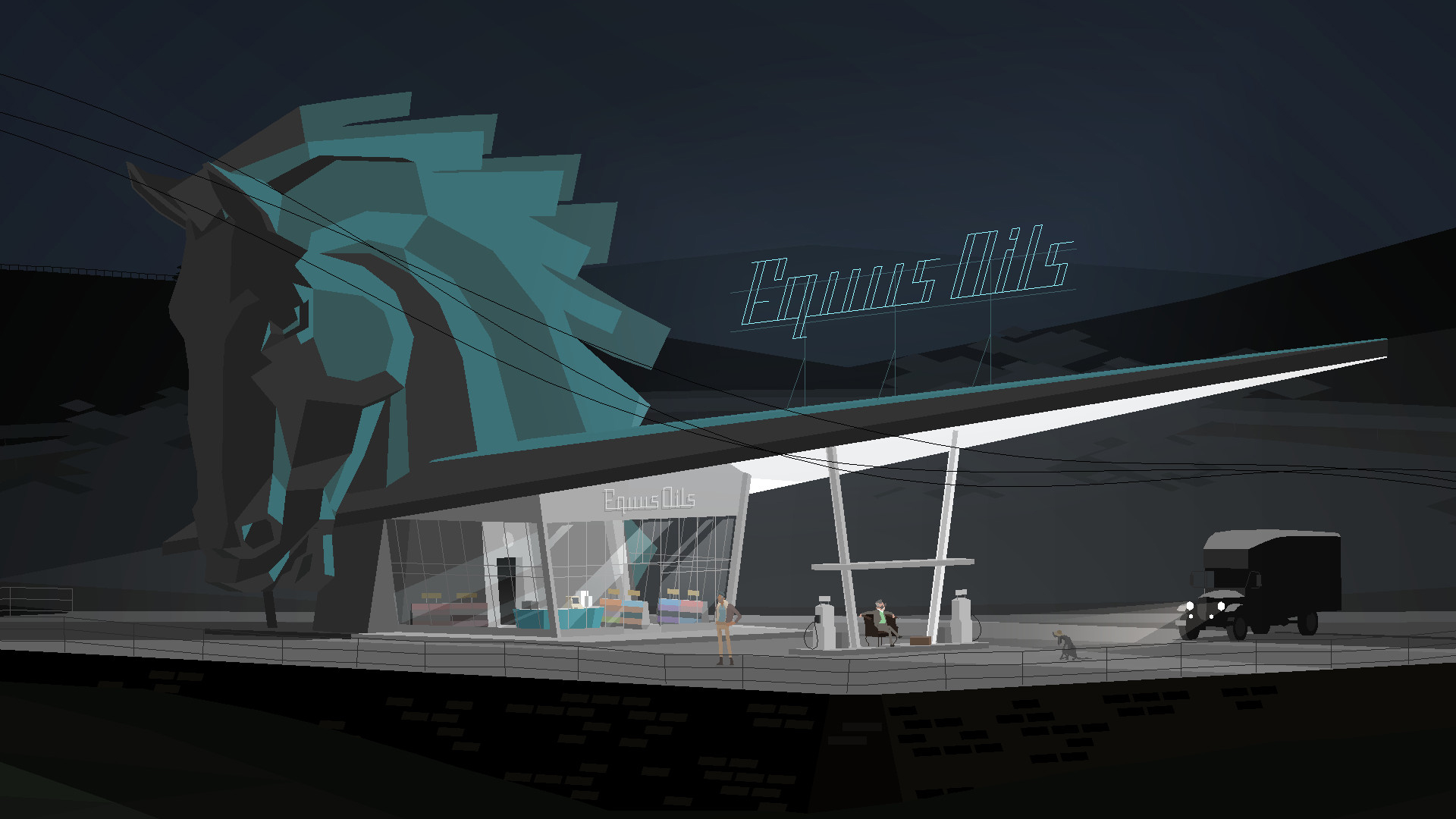
The circuitous journey that you undertake in Kentucky Route Zero feels in some way emblematic of the road Cardboard Computer has taken developing the game; since the team launched the Kickstarter for Kentucky Route Zero in early 2011, they found themselves taking plenty of unanticipated detours. But both player and developer are finally at journey's end.
On January 28, Kentucky Route Zero's fifth and final act was released on PC, along with a TV edition that brought the surreal magical realist adventure to PS4, Switch, and Xbox One. Cardboard Computer's Jake Elliot, Tamas Kemenczy, and Ben Babbitt join us to reflect on the journey as Kentucky Route Zero reaches its final destination.
ACT I: Inspiration
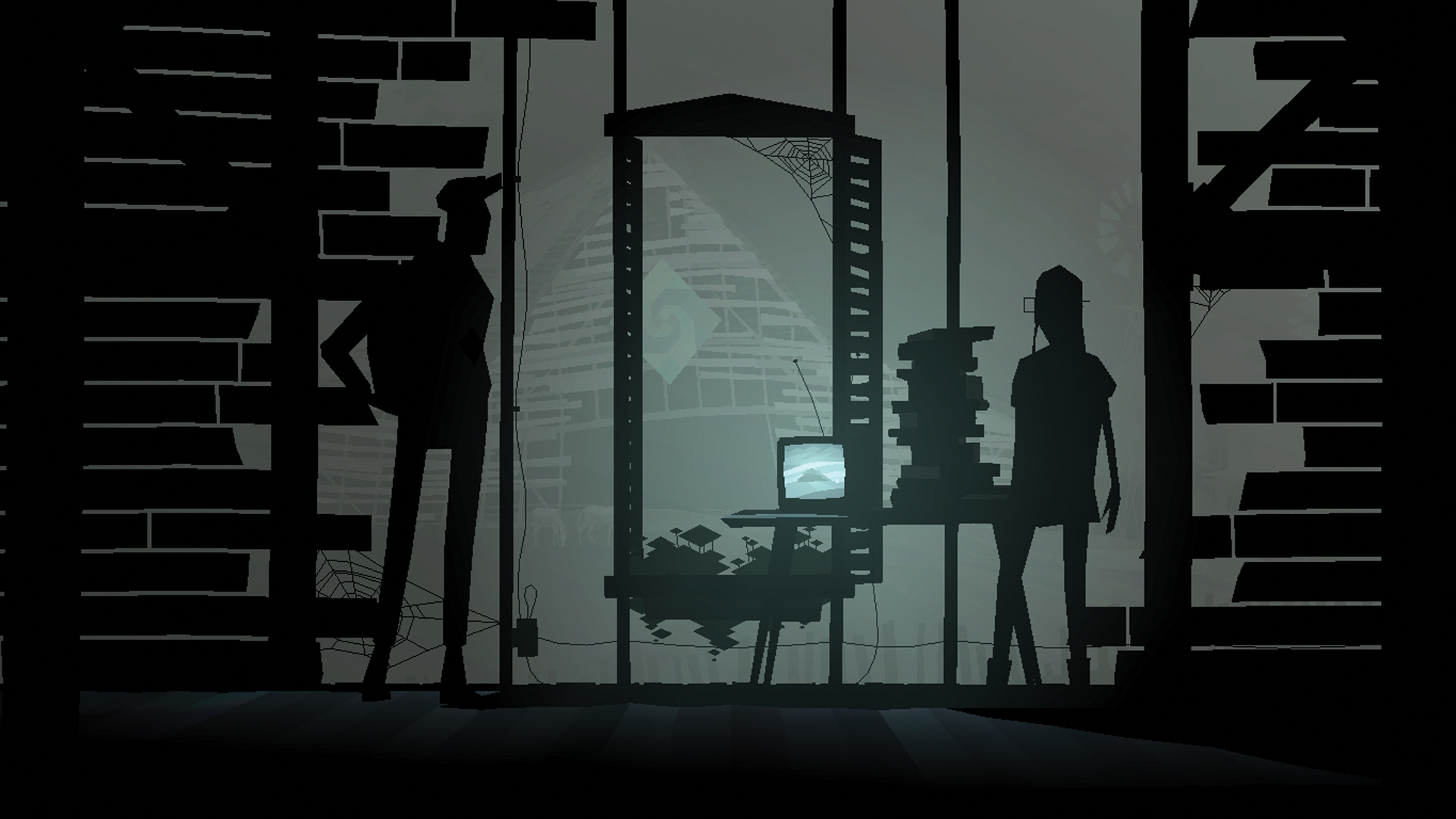
"We all met in the art community in Chicago," Elliot tells me when I ask how the team got together. "Tamas and I have been working together on electronic art stuff, like installation art, software and performance, since 2005 or 2004 and only started making games together a year or two before Kentucky Route Zero."
One of those games was what Elliot describes as a "sort of experimental remix of Colossal Cave Adventure from the '70s – which is another adventure game set in Mammoth Cave in Kentucky". In that project, Elliot and Kemenczy saw the seed of an idea for something more ambitious. As they kicked around ideas for what would become Kentucky Route Zero – fittingly, as Elliot was driving around Kentucky – it was that seed that that took root. Elliot and Kemenczy invited Babbitt on board to put together a band and compose music for the game, and eventually the trio ended up co-designing Kentucky Route Zero as the original idea was fleshed out and evolved during development.

"It was going to be like Metroid or Castlevania, but a non-violent Metroid or Castlevania"
Jake Elliot, co-creator
Go back to the game's original Kickstarter trailer and you can see that a lot has changed over time. The team tells me that they were always open to that. "That initial trailer was sort of a pitch for the game and a way for us to establish the tone of the game. That was the most important thing for us at that moment," Elliot recalls. "It was a prototype of the game, but more like an atmospheric prototype or a thematic prototype, to figure out what the game was going to feel like before we got into implementing what it was going to play like mechanically."
And when it comes to the mechanics, you might be surprised to find out just how different KRZ could have been. "I think in the initial email that I sent to Tamas I proposed that it was going to be like Metroid or Castlevania, but a non-violent Metroid or Castlevania, like if you replaced all the combat with talking," says Elliot. Once work on the game began in earnest, however, Cardboard Computer soon tossed this original concept for what KRZ would be to the wayside. It found a new form for the game, one that better matched the tone and atmosphere it had sort to establish in that early trailer…
ACT II: Finding Form
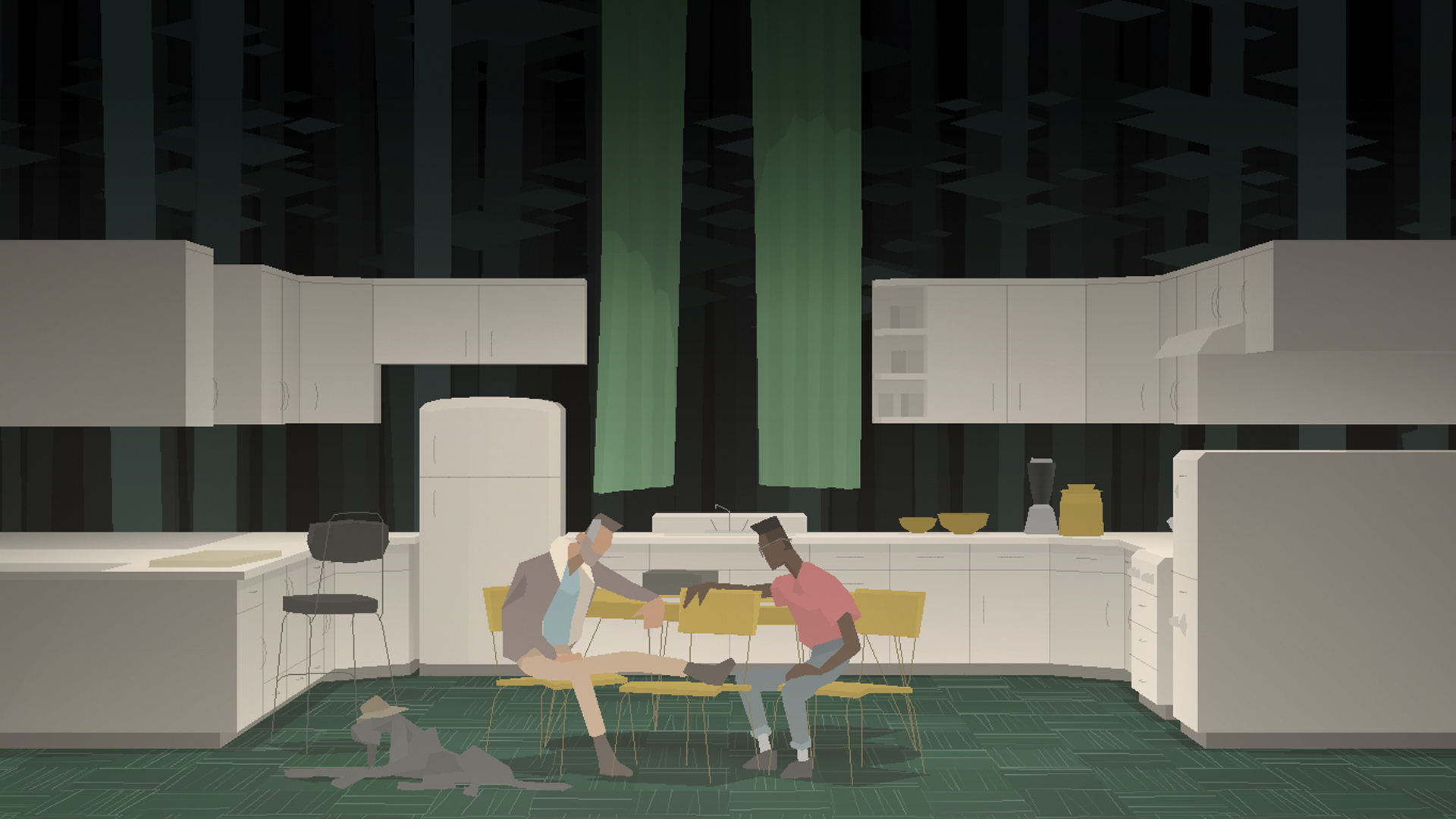
"It's been such a long time that it's hard for me to remember if there was a specific thing that clicked," Kemenczy says, reflecting on how Kentucky Route Zero landed on its now established style. "But I do remember there being one or two steps between what was the style you saw in the Kickstarter and what we have in the game now. It was several iterations. We started to look at the environments that we were building more as little theatre stages or set pieces. Set pieces with actors, thinking about blocking – how characters are on the stage and how the lights turn towards the camera all the time. So, a lot of character movement that automatically turns them towards the camera as if they were actors speaking to an audience," Kemenczy explains. "There's a certain economy of reusing time and space for a bunch of different scenes or settings within a play and that seemed interesting. It seemed boring to create a bunch of scenery just to see characters run through it like a lot of platformers do."
Sign up to the GamesRadar+ Newsletter
Weekly digests, tales from the communities you love, and more
That framing of Kentucky Route Zero's spaces as theatrical sets will resonate with anyone who has had the pleasure of playing the game and has seen the evident care Cardboard Computer has taken in crafting them. The game's locations are compositions drawn with space and time: they play brilliantly with transitions between foreground and background, employ clever visual tricks as a storytelling device, transform in step with the game's musical set-pieces.
While it's true that you can go back to the game's first trailer and detect traces of the tone that Kentucky Route Zero has now established, it seems unlikely its full potential would have been realised had the team not found this clever approach to space and perspective. That it was able to do so is a result of Cardboard Computer's flexibility. The team landed on the idea of Kentucky Route Zero's spaces as theatrical sets because they allowed it to become what it would be, followed what was interesting, and made practical concessions where necessary.
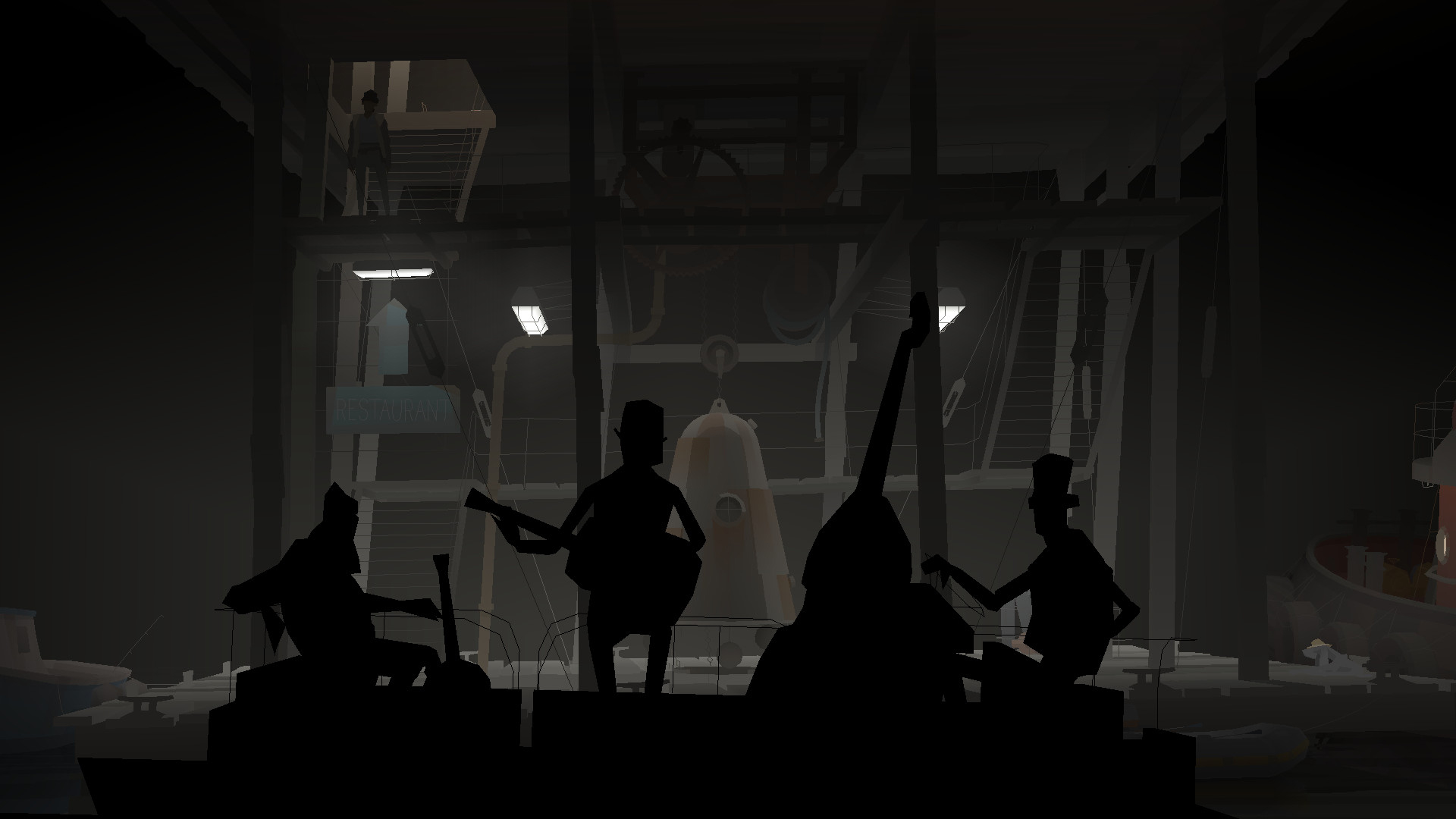
"We always had the story divided into these sections, but we thought we'd release it all in one go," Elliot tells us. "Once we started working on it, it hit us how long it takes to execute some of this stuff. We learned that on the job," he continues.
After working on the game for about a year, the trio came to realise that they either had to release something or face the unappealing prospect of working in isolation for what could have been many years. So, the release of individual 'Acts' and development structure emerged. A practical decision, it may have been, but it also turned out to be a good creative one.
"It gave us room for the whole thing to become larger in scope," Elliot says. "Each episode, we can take a little time between them to kind of re-centre ourselves and let each episode grow into the scale that they need to be. For example, the fourth episode of the game, in the original outline, is just about crossing a river," Elliot explains. "It was super narrowly scoped, but looking at that chapter as a whole piece, we were able to let it grow into something a lot more complex. We have an outline that we've been working from since the beginning in broad strokes, but we leave a lot of questions unanswered for ourselves about what it's going to look like materially."
ACT III: Strange Spaces
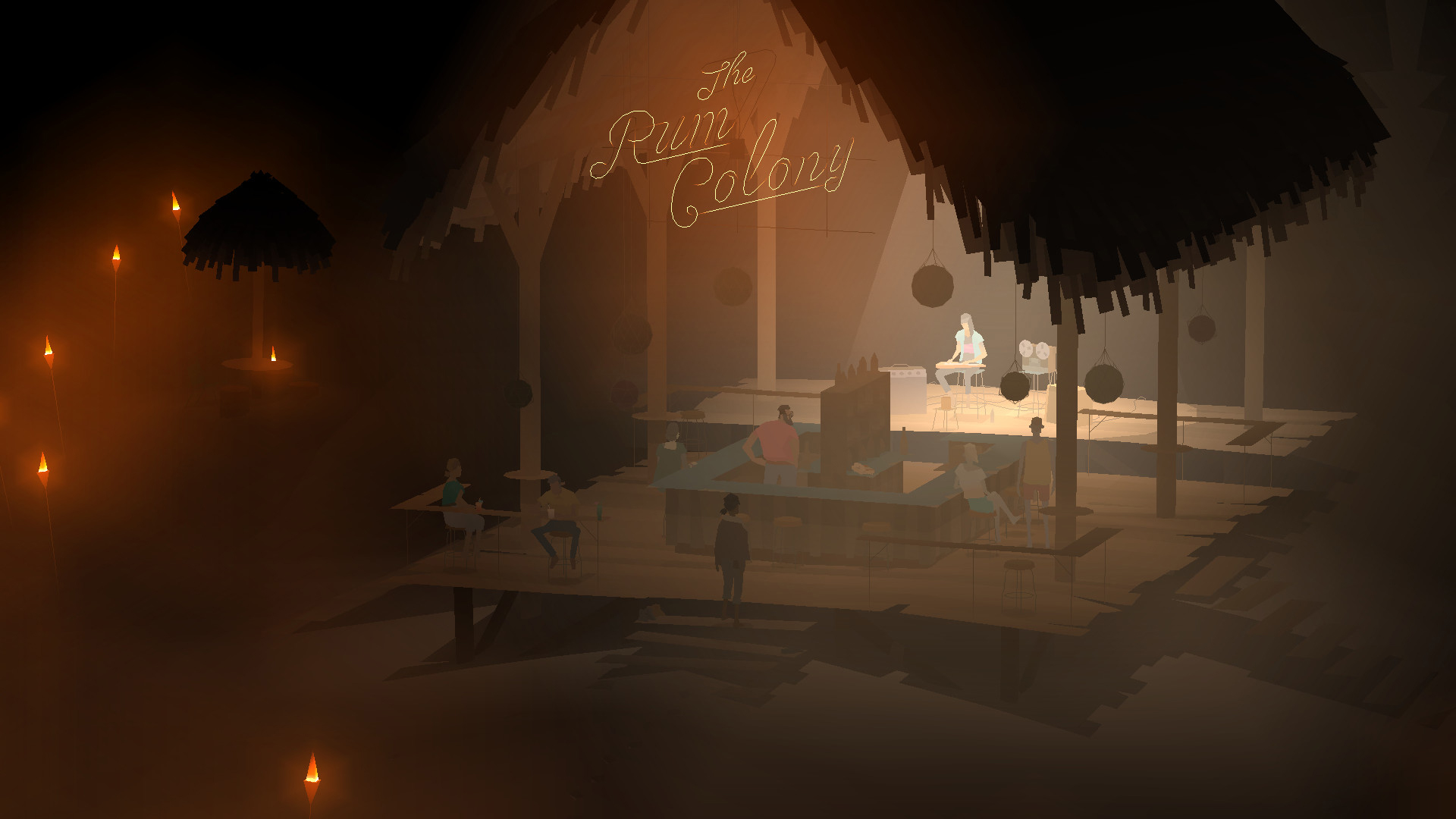
In most games, when a character points you in the direction of the next location you need to visit, you'll end up with a big flashing marker on your map. Not so in Kentucky Route Zero. In this game, all you'll get are vague directions that are easy to forget or misinterpret. You float between places in a way that's often surreal and disorientating. That's perhaps as important to Kentucky Route Zero's atmosphere as the locations themselves: your confusion about where you are, if you're supposed to be there, when you are there, even. "Are we inside or outside?", as Shannon asks in Act II. If that gives you the feeling that Kentucky Route Zero wants you to be lost, you'd be right.
"You're supposed to be lost in this game," Elliot tells me. "The character is lost. He's looking for a place he doesn't know where it is. We tried a few different things, mechanics for navigating from space to space," he reveals. "One thing we tried was this first-person view where you're looking out the dash of the truck and you have to watch for landmarks and road signs and turn off at just the right moment. Another thing we tried is when you leave one space and go to another, there's a chance of a random encounter between the two, just to emulate the sense of being lost."
"Ultimately, we really wanted to do this map," Elliot says. "It was visually interesting and it was nice to let the player wonder a little bit. This is kind of what we came up with to make the player feel lost: we just ended up making them follow these directions. Coming to visit my wife's family in Kentucky, I had some experiences where people would give us directions that were…pretty odd: 'take a left at this pond, there's usually some cows around there, but they might not be out there at this time of year' – these kind of impressionistic directions".
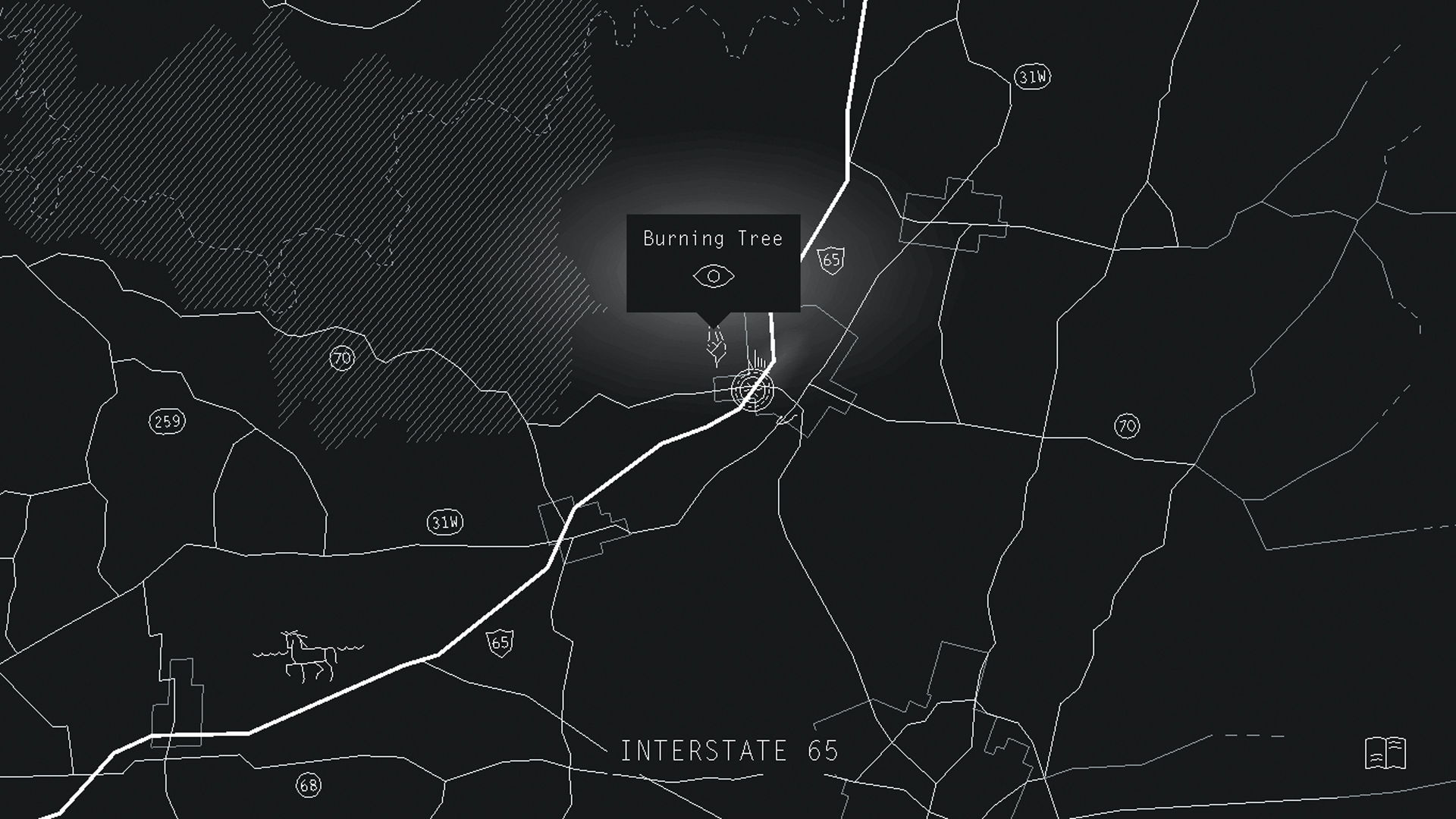
"A cave is a threshold between the above ground and below ground. That's why caves are mystical interesting sites"
Jake Elliot, co-creator
Seasoned travellers of Kentucky Route Zero's strange geographic and psychic landscape might have noticed that it's filled with liminal spaces. You're often in-between. Either at literal sites of transition, or visiting places transitioning from one state into another: petrol stations, boats, abandoned mines. I wanted to know what it is that seems to fascinate the team about these border spaces, and they were only too happy to oblige.
"There's the overall theme that you're making a delivery," Kemenczy responds. "So, a lot of these places are intersections on the most basic level, on a highway or a road; you're transitioning through spaces anyway. But there are themes, like the second act is about home and there is the museum…," Kemenczy says. "Yeah, the people being displaced," Elliot chimes in. "And there was that old hymn that we used in the original trailer and that's in the game: This World Is Not My Home. A thematic of that is 'I'm just passing through' and it's a function of that feeling of being precarious. Of your life being a precarious proposition economically. That you don't have the agency to take ownership of the world. You can't put down roots so you're being shuttled through."
"And Kentucky itself is, I always felt, a place full of transitions," Elliot continues. "It's a border place in a lot of ways. Geographically, we pass from the farmlands of the Midwest into the Appalachia's – that passage happens through Kentucky. During the Civil War, it was this contested border place. And then also this idea of going into caves and passing through – a cave is a threshold between the above ground and below ground. That's why caves are mystical interesting sites."
ACT IV: Searching for meaning
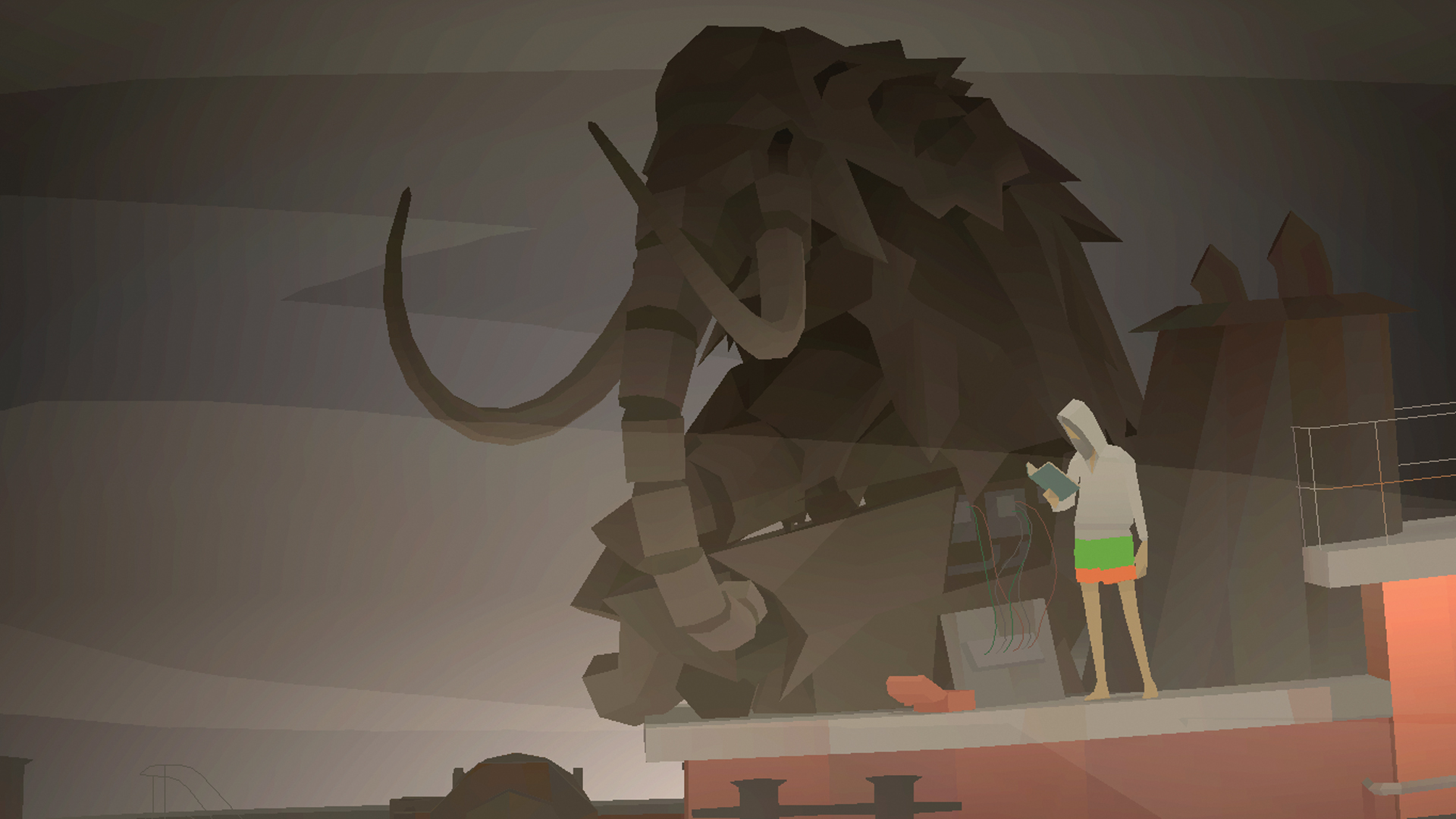
You'll find no clumsy exposition in Kentucky Route Zero's writing. It gives space for you to develop intuitions about its characters before it lets snippets of backstory float to the surface, dredging emotional weight with them from the murky pool of the past. Nevertheless, the writing's surreal style and frequent shifts of perspective can make it feel like it deliberately elides meaning. Like it's being wilfully obscure. As the team has already suggested, however, there are themes to be picked up on.
The theme of economic precarity is perhaps the most obvious. Kentucky Route Zero presents a populous exploited and broken by an inhumane and faceless economic system: dead miners who were paid in tokens that they had to slot into fans to keep air circulating in the mine; families whose homes have been repossessed; a doctor whose genuine desire to help people has been twisted by debt to make him into a tool to push yet more debt onto his patients. It can be easy to draw on the parallels between the depression-era that Kentucky Route Zero so heavily evokes and the post-financial crash world of today, and so perhaps it should come as no surprise that strong economic themes are prevalent throughout the entirety of the series.
"[Development] was definitely happening right after the financial crash in '08/09, so that was something specific we were responding to in that moment," Elliot explains. "But also, looking at the game, it's set in American and a lot of it is about American history in regards to wealth inequality and precarity and the exploitation of labour. So, yeah, the depression era and the 40 years or so leading up to the depression where wealth inequality was accelerating," he continues. "In Kentucky, we had the coal wars in that period where mining companies were exploiting their workers and using violence to suppress unions. Another period that we look at a bit is the 1970s during the oil crisis. There are those specific moments that we try to connect and we're also careful to try and set the game in a non-time, to kind of conflate all these times, because it's important to us to communicate that this moment right now, or that moment 7 years ago, they're not unique. They are part of a pattern."
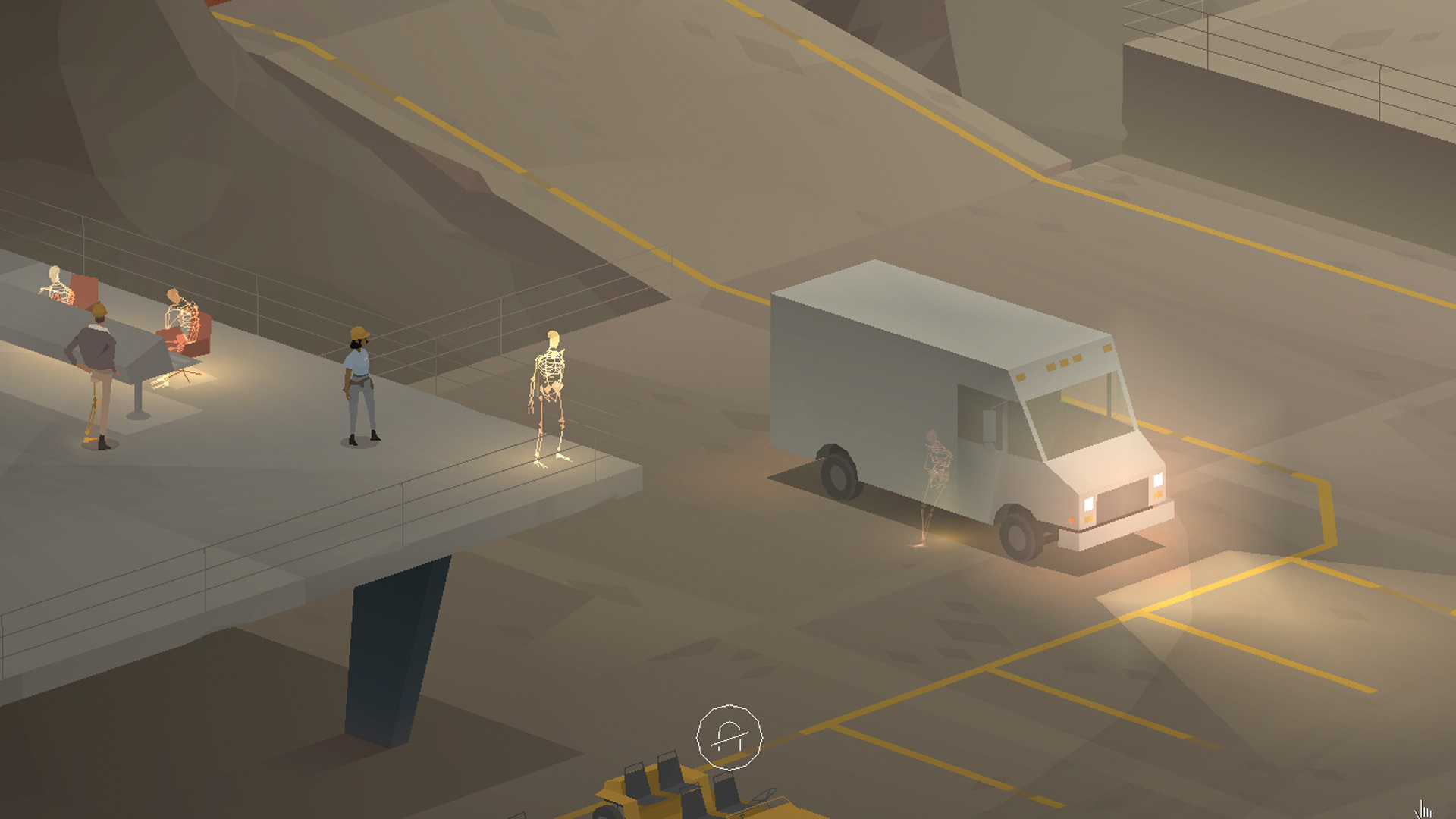
Kentucky Route Zero also gives you plenty of space to find meaning yourself – to shape it – through the dialogue choices that you make. It often feels like choices are framed to put you in the position of a storyteller, rather than as a character making a decision: the game will offer you the option "Conway stays put", rather than "Stay put", for example, expressly situating you outside of the character.
"We play with the grammar in a few spots like that," Elliot explains. "The main constraint that's at work there is that the script is meant to, in most cases, read like a stage play. So those things are meant to read like stage directions. That's another bit of a call-back to American tragic theatre – a lot of the famous works of American tragic theatre deal with these same issues of economic precarity. Death of a Salesman and The Iceman Cometh are two of them that we call back to a lot. Sometimes there are these italicised passages that are mixed in there that are a little bit more stream of consciousness to kind of disrupt that a little bit. Those are styled after some of Tennessee Williams play scripts."
As abstract and opaque as Kentucky Route Zero may be at times, but there is meaning to be drawn from it, if you're willing to look.
ACT V: Exiting The Zero
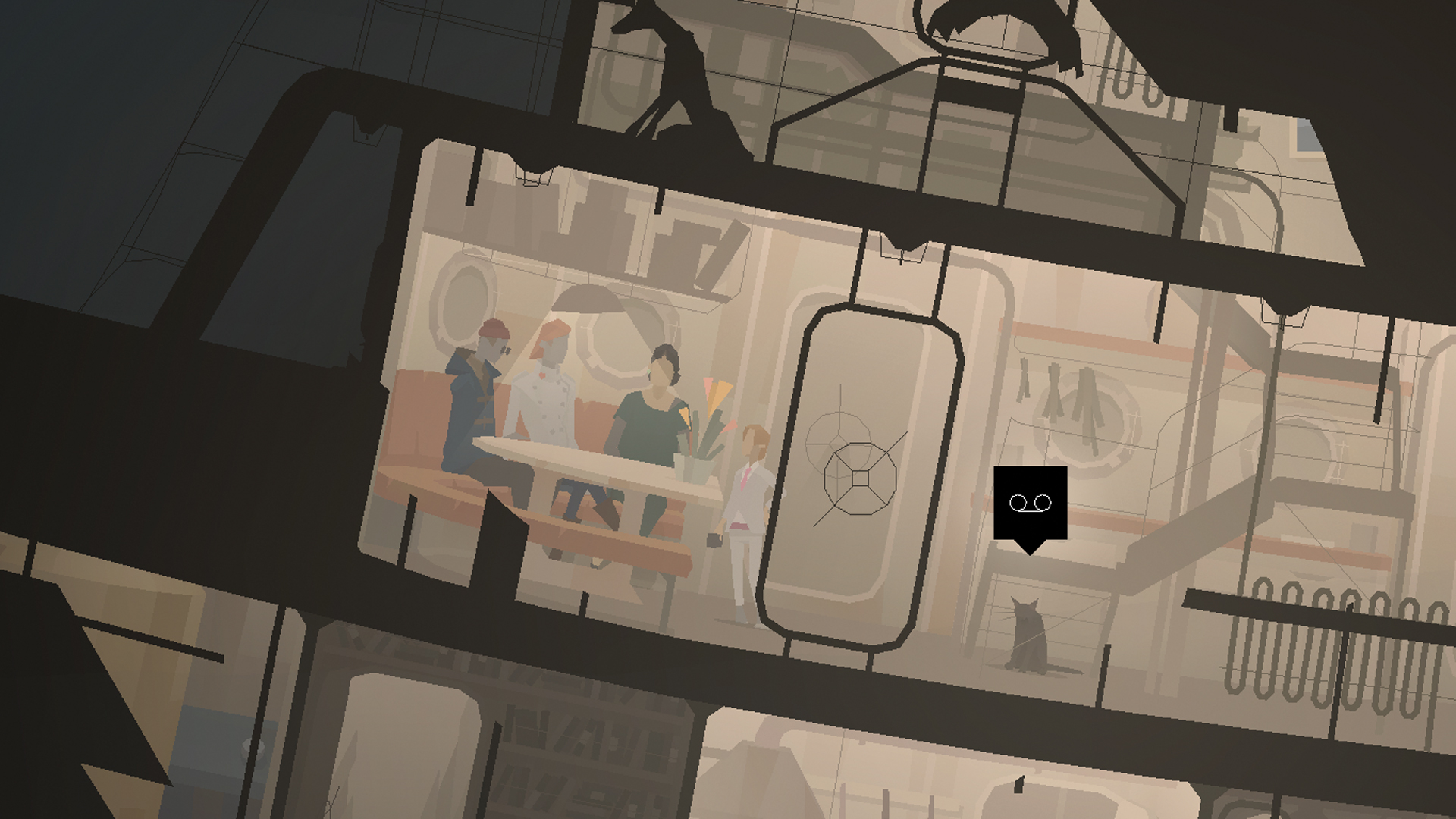
With Kentucky Route Zero's journey now complete, the game ready to be evaluated as a finished piece, GamesRadar can safely say that it is a triumph. It's long and circuitous route to completion was perhaps a necessary part of that triumph, shaping the form it has taken. "I personally don't really care about what we originally envisioned," Kemenczy tells me. "We like to keep the outline that we have pretty open ended".
"Yeah, it's mostly for utility," says Elliot. "If we have some things planned in advance, that's almost a concession we have to make so we can do things like foreshadowing and set some arcs going. But if we didn't have to do that, then maybe we wouldn't have even planned them!"
As flexible as Cardboard Computer may be, as open as the team has been open to letting the game grow and evolve organically, it's important to note that the trio always had a destination in mind. You only need to look at the response to the end of Game of Thrones or Lost to see how badly things can go when creatives set out on an episodic endeavour without a clear idea of where they are ultimately going. Kentucky Route Zero's final act – and, by extension, the game as a whole – is surely a success in part because Cardboard Computer did not make the same mistake. "The outline," Kemenczy tells me, "from the beginning, had a specific end".
And what can we take from that end? Cardboard Computer has long insisted that we should expect a tragic ending and it's final act certainly delivers that. However, it's also possible to detect a note of hope in the closing beats of Act V. The shift away from the darkness of previous episodes – and the storm that had devastated the town, the setting of the episode, the night before – to a fresh dawn in the light of Act V suggests a near beginning is on the horizon.
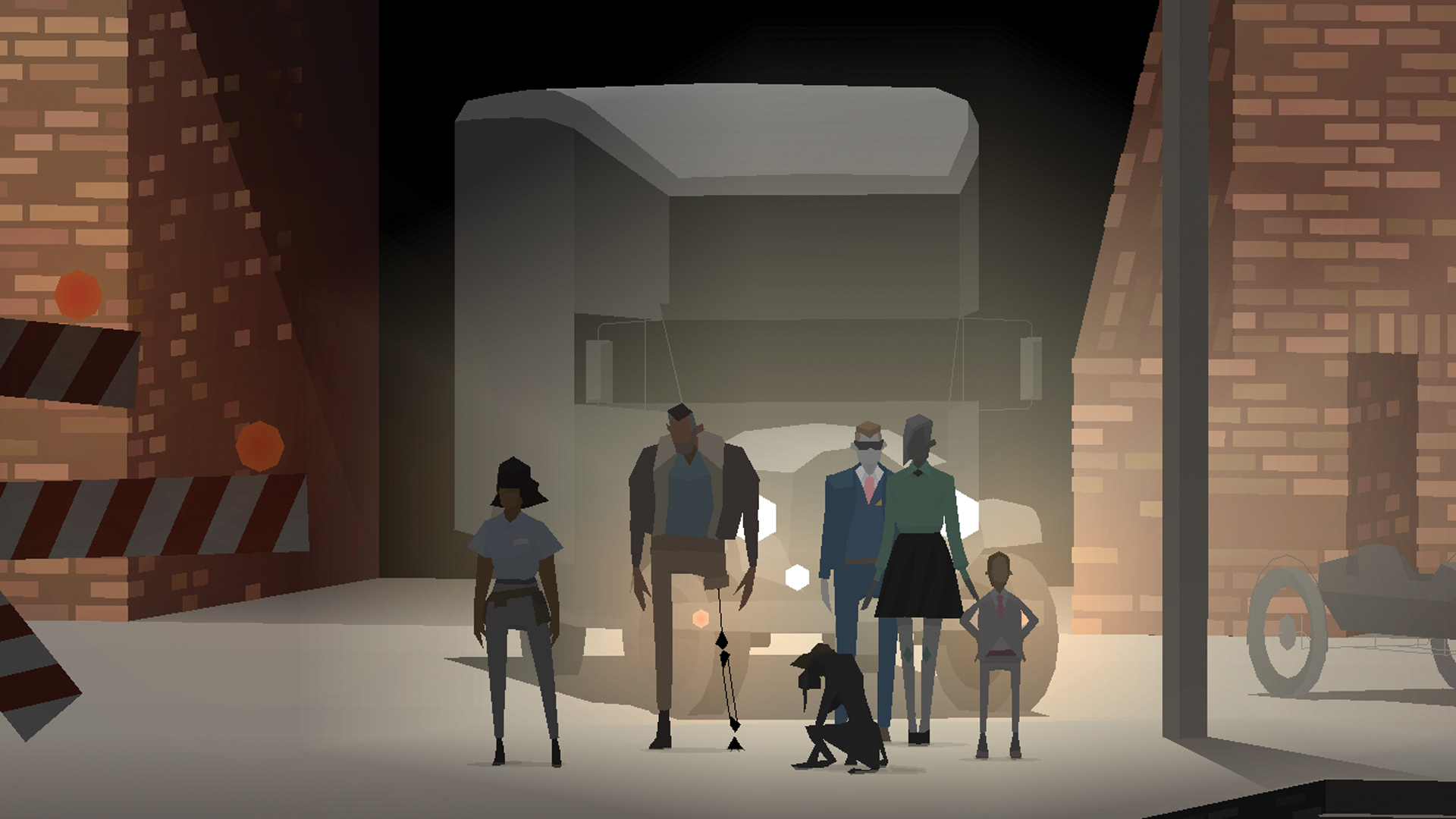
It seemed boring to create a bunch of scenery just to see characters run through it like a lot of platformers do"
Tamas Kemenczy, co-creator
The band of misfits we've been travelling with appear to have formed something of a makeshift family and there's a sense that they, along with the residents of the devastated town, may be ready to build a future together. So yes, tragedy is keenly felt – in the backstories of the game's main characters, in the history of its world, in debt, and exploitation, and poverty. Yet, it feels like Cardboard Computer does not intend to leave each of us wallowing in misery as this journey finally reaches its end.
"It's a tragedy for sure," Elliot reiterates. However, "there are some hopeful moments in there and a lot of it is about human relationships," he says, "so there's some hope in that project."
"I agree," echoes Kemenczy, "in terms of story, I think we try and add a hopeful layer to it. In Act IV, we talked about trying to make it clear that there are communities and people making a home in these liminal spaces along the river, so even though that act had, probably, one of the most tragic scenes, hopefully that's offset by having a look into the communities that exist there."
"And tragedy is about human nobility too," Elliot remarks. "It's not miserable and pessimistic."
This feels like a fitting way for Kentucky Route Zero to end. It mourns the victims of economic injustice in a profound and powerful way, but it does not leave us feeling paralysed. It suggests that the potential for a better world exists. We just have to make it.

Kentucky Route Zero is one of the best games of the decade. Click through on the link to see where the influential point-and-click finished in our top 100 rankings.
Paul Walker-Emig was once a video games journalist, before he moved into PR. During his freelance career, Paul wrote for GamesRadar, The Guardian, Retro Gamer, Wireframe, Kotaku, VICE, VG247, OXM, and more. He runs the Utopian Horizons podcast, which covers a different utopia, dystopia, utopian thinker, or movement each episode. He also runs the podcast getObject, which is a video game website and podcast based around collectible items.


